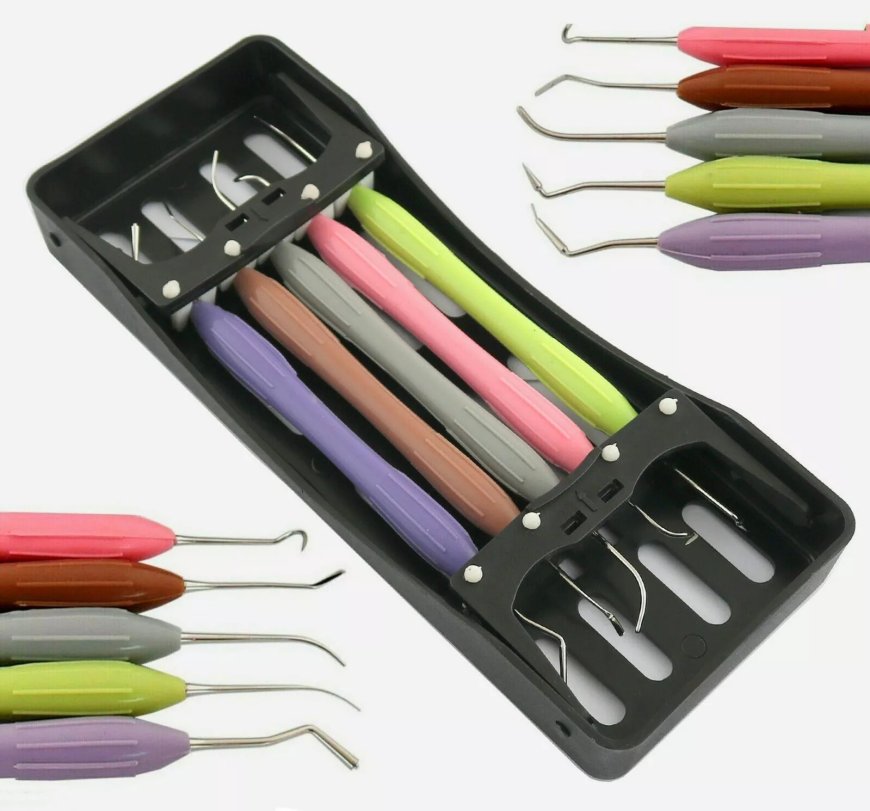Choosing the Best Composite Filling Instruments: Features, Types & Benefits
Discover how to select the ideal composite filling instruments for precise placement, shaping, and finishing, enhancing restoration quality and efficiency.

In restorative dentistry, accuracy and ease of handling are criticalespecially when placing composite materials. Whether you're reconstructing a small cavity or restoring anterior aesthetics, composite filling instruments are key to achieving non-stick, detailed, and polished restorations.
But with so many designs and materials on the market, how do you choose the best instruments for your clinical needs? This guide walks you through the features, types, and benefits of high-quality composite instruments, while also highlighting how they work alongside essential tools like dental elevators, eye instruments, and sinus lift instruments.
Why the Right Composite Filling Instruments Matter
What Are Composite Filling Instruments?
Composite filling instruments are designed for placing, sculpting, and contouring resin-based composite materials used in dental restorations. The best instruments prevent sticking, preserve the materials integrity, and enhance the speed and accuracy of the procedure.
? Discover a wide range of composite filling instruments designed for smooth handling and precise shaping.
Top Features to Look for in Composite Instruments
1. Non-Stick Surface Coating
-
Prevents adhesion of resin to the instrument
-
Facilitates a smooth and uninterrupted workflow
-
Often made with titanium or Teflon coating
2. Ergonomic Design
-
Comfortable grip reduces hand fatigue
-
Balanced weight allows for delicate sculpting
-
Important during extended procedures or fine anterior work
3. Variety of Tip Shapes
-
Ball, flat, condenser, and carver tips to address all areas of the restoration
-
Enables anatomical sculpting of occlusal surfaces and interproximal contours
Types of Composite Filling Instruments
1. Plastic Filling Instruments
Ideal for general placement and shaping of composite resin.
2. Condensers
Used to compact the composite into the prepared cavity, minimizing air gaps.
3. Burnishers
Smooth the surface and polish the restoration, enhancing final esthetics.
4. Carvers
Shape occlusal anatomy and interproximal contacts for proper function.
How Composite Instruments Work with Other Key Surgical Tools
1. Supporting Dental Elevators in Multi-Step Treatments
In many cases, restorative treatments follow surgical procedures like extractions. High-quality dental elevators ensure minimal trauma during extractions, preserving the site for future composite fillings or prosthetic restorations.
2. Completing Surgical Workflows
Dentists often rely on complete dental surgical instruments kits that include composite tools alongside elevators, forceps, and scissors for streamlined care. After surgical site preparation, composite instruments are used to rebuild dental structure and ensure esthetic function.
Restorative Applications After Sinus Lifts and Implants
1. Integration with Sinus Lift Instruments
Procedures involving posterior maxillary regions often require sinus lift instruments. After successful bone elevation and healing, composite filling instruments come into play during restorative phasessealing margins or shaping temporary crowns before final implant placement.
2. Functional Precision in Complex Cases
In such multi-stage treatments, precision and non-stick handling become even more crucial, especially when managing soft tissue margins and interproximal contacts.
Cross-Specialty Use: Eye Instruments and Composite Tools
Many dental and maxillofacial practices also invest in eye instruments and eye surgery instruments. These instruments demand the same level of control, precision, and durability as composite toolshighlighting the overlap in surgical quality standards across specialties.
Benefits of High-Quality Composite Filling Instruments
? Efficient Material Placement
Reduce chair time by handling composites without sticking or dragging.
? Improved Restoration Aesthetics
Sharp tips and smooth application create natural shapes and high-gloss finishes.
? Better Clinical Outcomes
Fewer air bubbles, smoother margins, and precise contouring lead to longer-lasting restorations.
? Comfort and Ergonomics
Reduces fatigue for clinicians during long procedures and enhances control.
Tips for Selecting the Best Set
When choosing composite instruments:
-
Look for full kits with multiple tip designs
-
Verify non-stick coating and corrosion resistance
-
Choose ergonomic handles for precision grip
-
Match instruments to common restorative procedures in your clinic
Conclusion: Choose Smart for Better Restorations
Quality composite filling instruments play a direct role in the success of restorative treatmentsfrom single-surface fillings to full arch reconstructions. Combined with efficient dental elevators, precision sinus lift instruments, and complementary tools like eye instruments, they form the backbone of a modern dental operatory.
Dont compromise on performancechoose instruments that enhance control, speed, and results.
? Upgrade Your Restorative Toolkit Today
Get premium composite filling instruments designed for non-stick performance, durability, and detailed dental restorations.





































